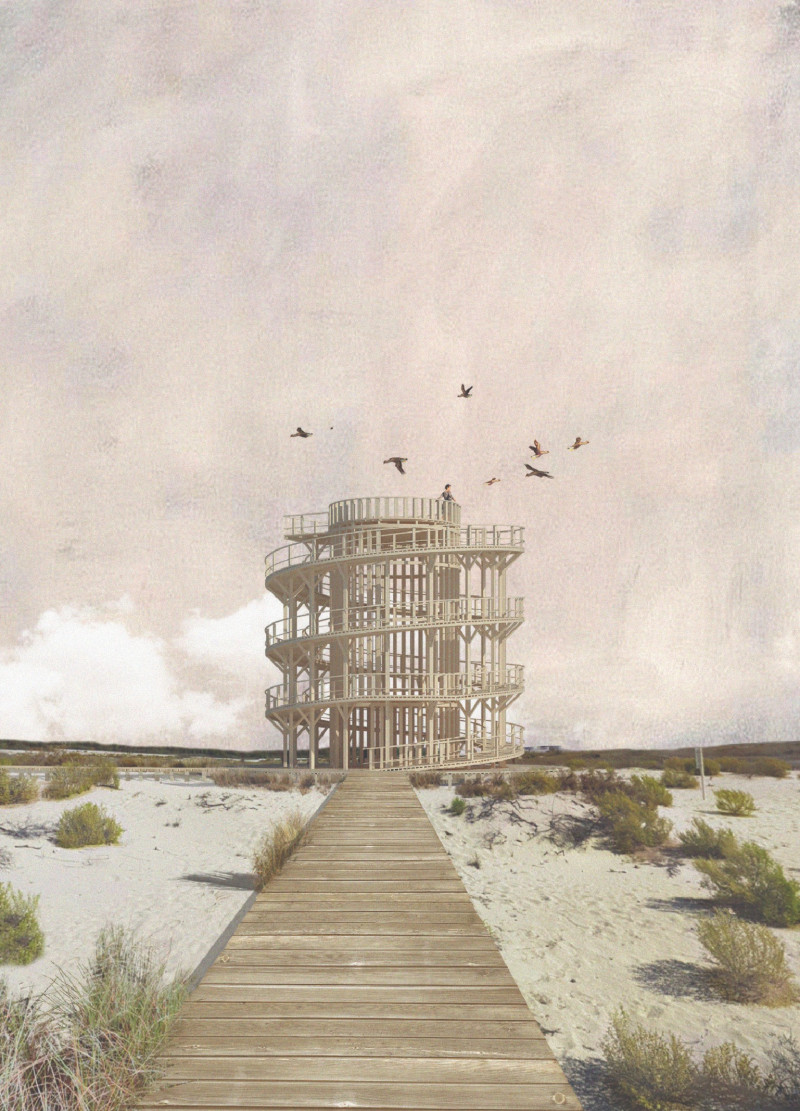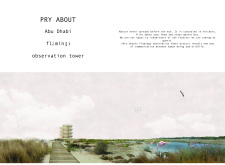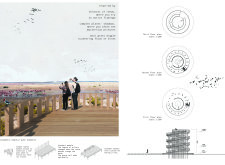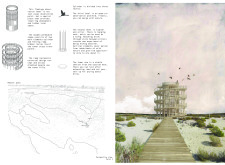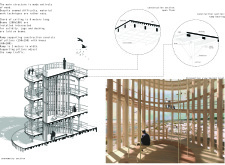5 key facts about this project
The Flamingo Observation Tower in Abu Dhabi offers a dynamic interaction between visitors and the natural landscape. Set within a rich ecological area, the tower focuses on providing spaces to observe local wildlife, especially flamingos. The design emphasizes transparency and ease of access, allowing people to connect with nature while respecting the environment around them.
Structure and Levels
The tower features a cylindrical design divided into three levels, each serving a specific purpose. The top level includes an open-air observation platform, allowing visitors to enjoy wide views of the surrounding area. Here, individuals can immerse themselves in the environment and appreciate the natural beauty of the habitat.
The second level is designed to feel lighter and more open. This space includes a hanging seat for contemplation, providing an experience similar to being a hidden observer. Vertical slots between the pillars allow glimpses of wildlife without disturbing their activities, enhancing the overall experience of being close to nature.
Pathway Design
Pathways throughout the project are inspired by thickets of reeds. This design encourages exploration and promotes a thoughtful journey through the natural surroundings. By guiding visitors along these paths, the tower creates an opportunity for deeper engagement with the ecosystem. This approach respects the existing habitat while inviting individuals to discover its wonders.
Materiality and Construction
Wood is the primary material used in the construction of the Flamingo Observation Tower, reflecting a commitment to sustainability. This choice promotes a warm and inviting atmosphere. The structural framework includes beams, positioned strategically for support, with lags and decking creating stable walking surfaces. A ramp system featuring pillars ensures easy movement between different levels, facilitating a smooth visitor experience.
The tower includes elements that enhance the sense of tranquility and connection to nature. The vertical features not only add visual interest but also encourage visitors to engage with the surroundings. This thoughtful design promotes appreciation for the wildlife habitat, inviting exploration and observation in a respectful manner.


